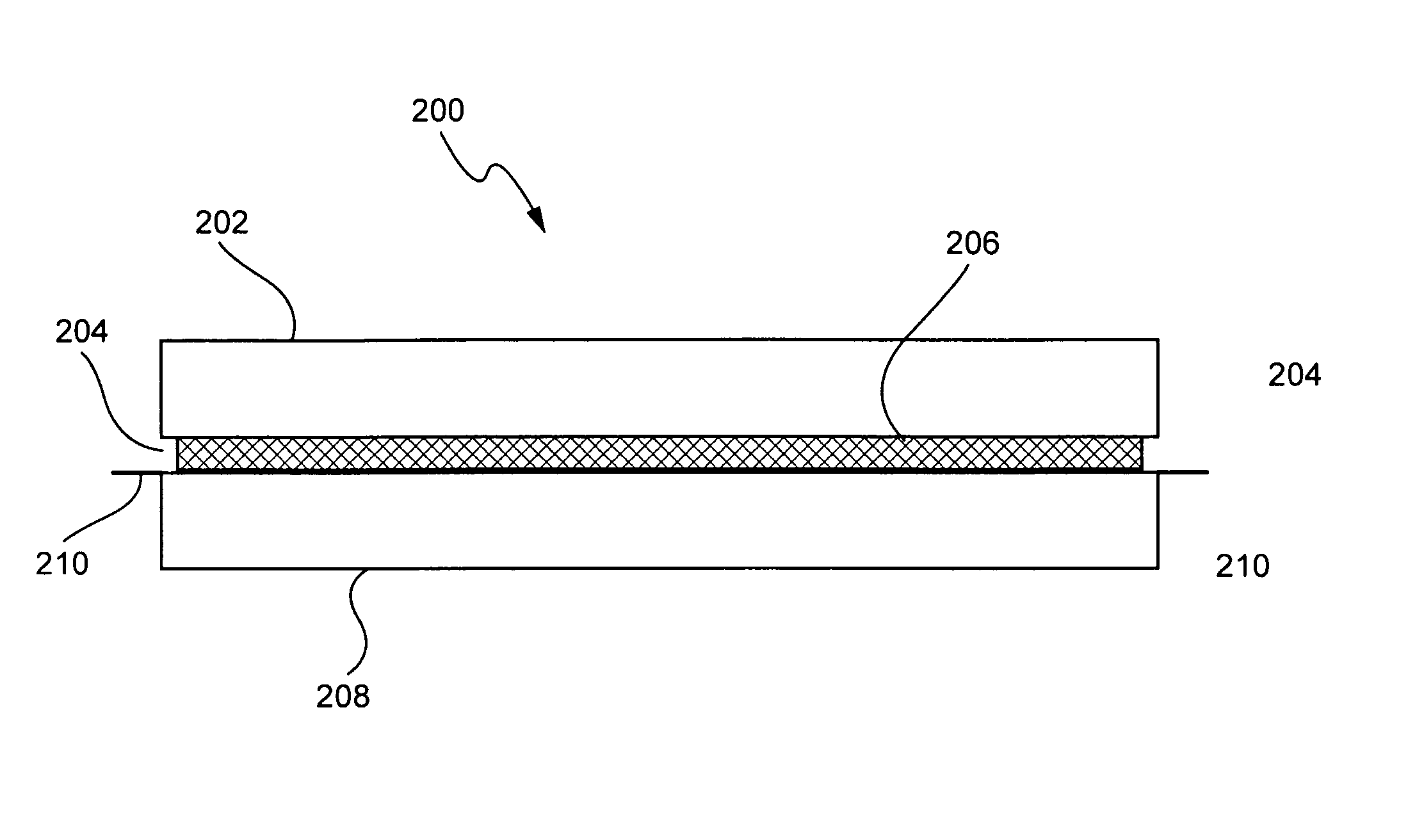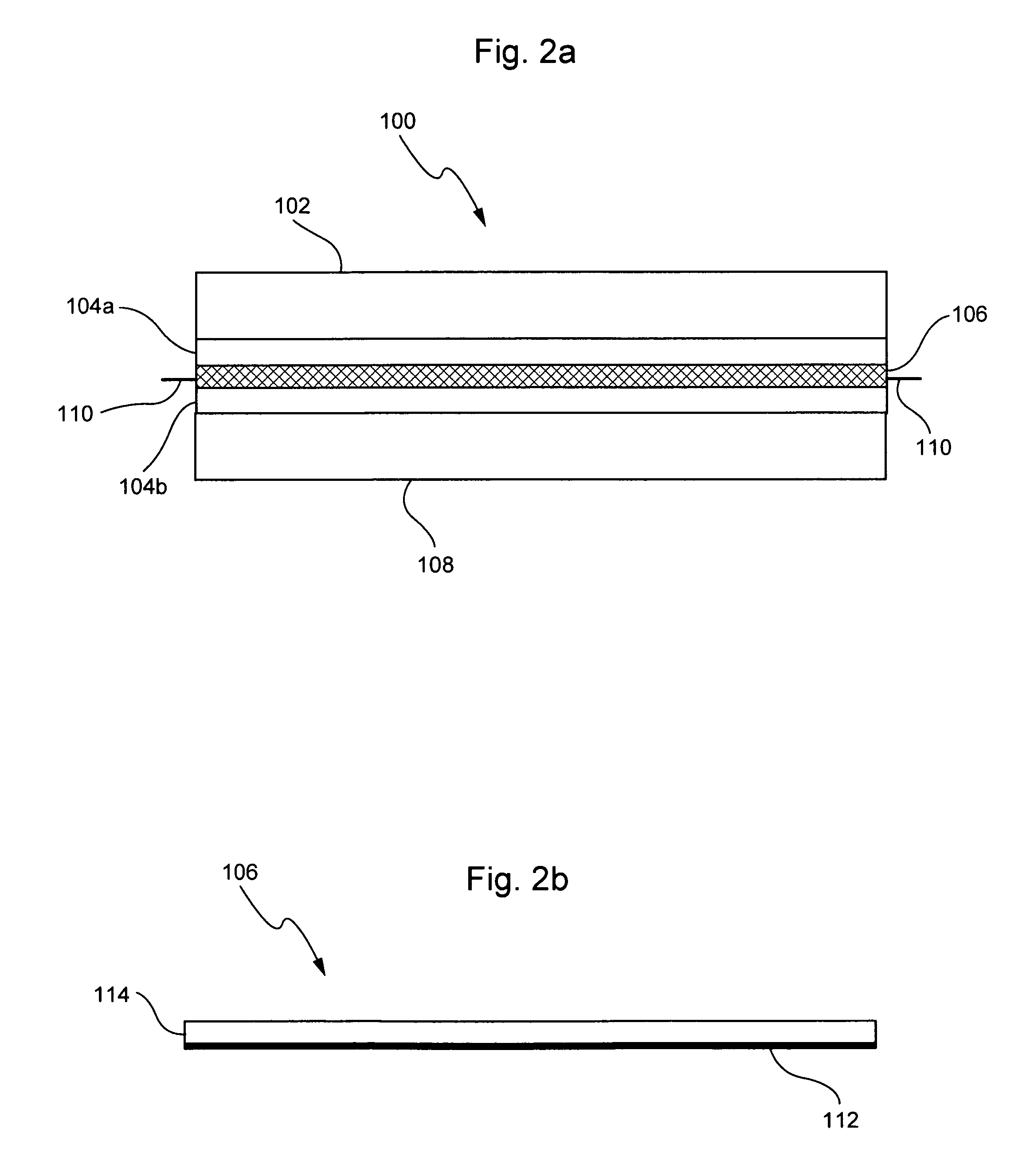Photovoltaic modules, and/or methods of making the same
a technology of photovoltaic modules and photovoltaic cells, applied in the direction of roofs, electric vehicles, glass reforming devices, etc., can solve the problems of increasing affecting the performance of the vehicle, and the conventional approach to attaching pv devices to the sunroof may be problematic, so as to increase the cost and complexity of manufacturing, and add more assembly steps and complexity to the overall manufacturing process.
- Summary
- Abstract
- Description
- Claims
- Application Information
AI Technical Summary
Benefits of technology
Problems solved by technology
Method used
Image
Examples
Embodiment Construction
[0034]Certain example embodiments may relate to PV modules comprising two glass substrates, a PV layer disposed therebetween, and a bonding agent to bond the glass substrates and the PV layer together into one integrated PV module.
[0035]PV devices come in many forms. One area of PV devices is Thin Film Solar Cells (TFSC). Examples of TFSC devices include CIGS (Cu(In, Ga)(Se, S)2) and CIS (CuInSe2) solar cells.
[0036]CIGS and CIS type photovoltaic devices may include, from the front or light incident side moving rearwardly, a front substrate of a material such as glass, a front electrode comprising a transparent conductive layer such as a TCO (transparent conductive oxide), a light absorption semiconductor film (e.g., CIGS and / or CIS film), a rear electrode, and a rear substrate of a material such as glass. Sometimes an adhesive is provided between the front substrate and the front electrode, and it is also possible for window layer(s) (e.g., of or including CdS, ZnO, or the like) to ...
PUM
| Property | Measurement | Unit |
|---|---|---|
| thickness | aaaaa | aaaaa |
| thickness | aaaaa | aaaaa |
| thickness | aaaaa | aaaaa |
Abstract
Description
Claims
Application Information
 Login to View More
Login to View More - R&D
- Intellectual Property
- Life Sciences
- Materials
- Tech Scout
- Unparalleled Data Quality
- Higher Quality Content
- 60% Fewer Hallucinations
Browse by: Latest US Patents, China's latest patents, Technical Efficacy Thesaurus, Application Domain, Technology Topic, Popular Technical Reports.
© 2025 PatSnap. All rights reserved.Legal|Privacy policy|Modern Slavery Act Transparency Statement|Sitemap|About US| Contact US: help@patsnap.com



